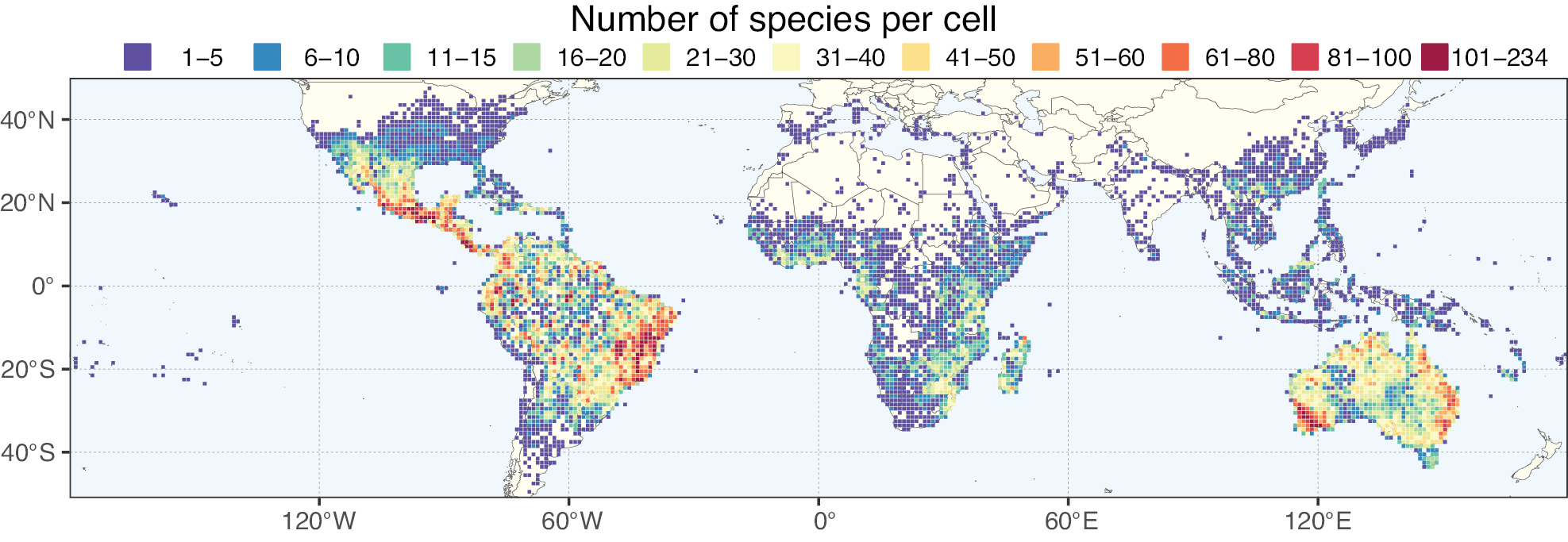
|
||
|
Map showing the global distribution of Caesalpinioideae species richness. Numbers of Caesalpinioideae species per one degree latitude / longitude grid cell. Infraspecific taxa are not counted individually but are included at the species level. All maps in this special issue are based on quality-controlled occurrence data from digitised herbarium specimens and floristic surveys (see Suppl. material 1 for details on occurrence data and methods used to generate maps). |